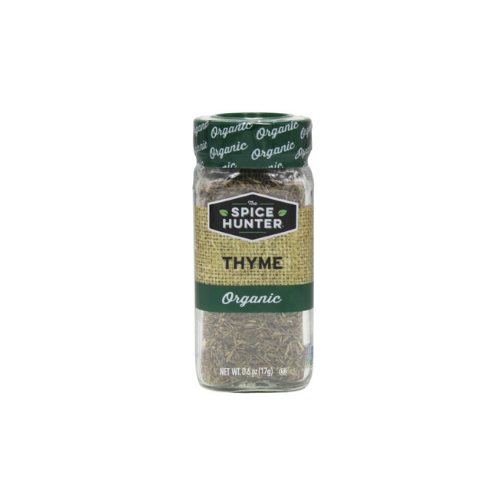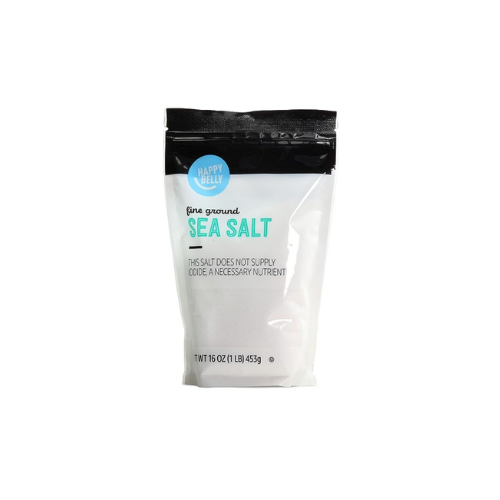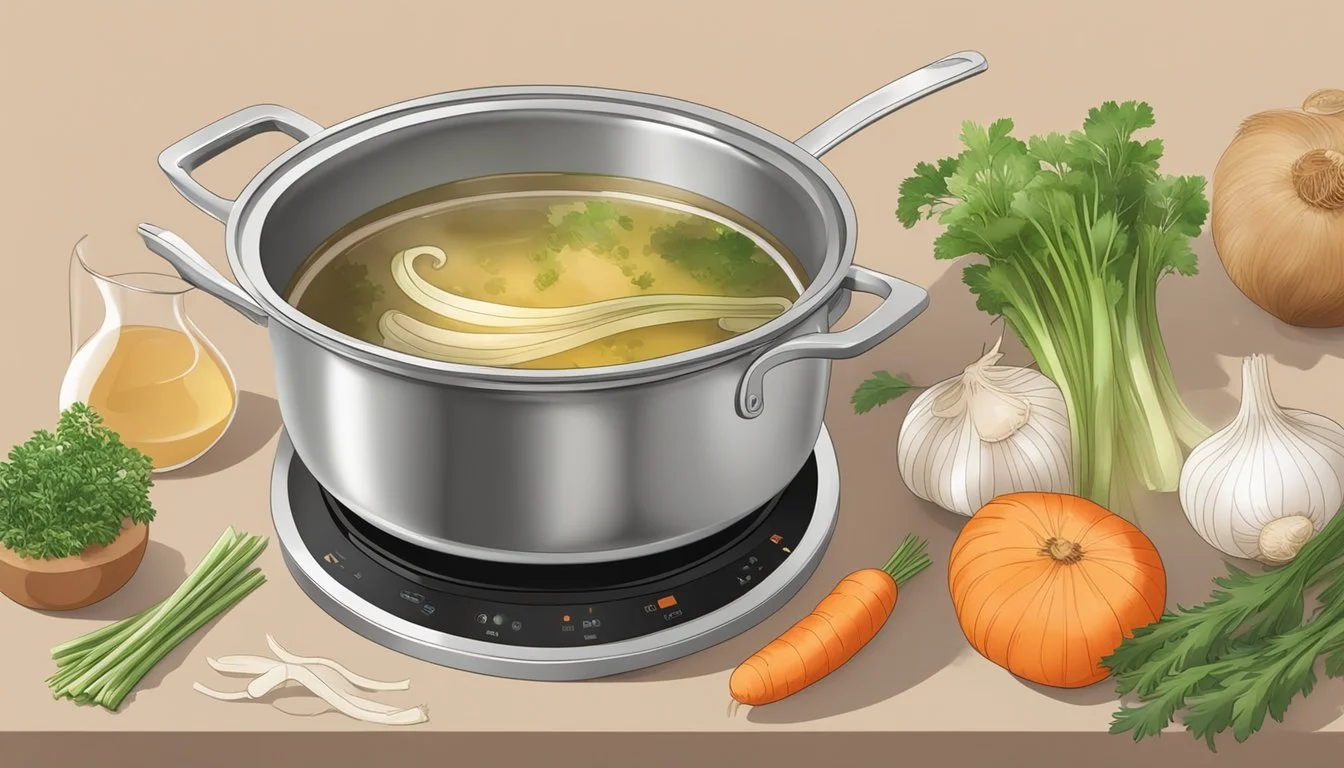How to Make a Carnivore Diet-Friendly Bone Broth Soup
A Nutrient-Dense Recipe Guide
The carnivore diet emphasizes the consumption of animal products and eliminates plant-based foods. Proponents of this diet often incorporate bone broth, regarded as a nourishing elixir, due to its health benefits and alignment with the diet's principles. Preparing bone broth for a carnivore diet revolves around simmering animal bones for extended hours, which extracts nutrients like collagen, minerals, and amino acids.
Bone broth, rich in collagen, may support skin, bone, and joint health. It is also recognized for its potential to enhance digestive health through its amino acid content. This makes bone broth a complementary addition to the carnivore diet, providing a source of hydration and nourishment while adhering to the diet's strict animal-based food criteria.
When preparing this type of broth, the cooking process is crucial to ensure the extraction of beneficial compounds from the bones. Simmering the bones at a low temperature over an extended period leads to a potent broth. Clear broths are generally favored, which involves skimming off foam during the early stages of cooking, resulting in a broth that is not only rich in nutrients but also aesthetically pleasing and palatable.
Essentials of Bone Broth
Making bone broth for a carnivore diet revolves around the proper selection of bones and understanding the nutrients they yield during the long simmering process. It's imperative to harness the benefits of collagen and gelatin for a nutrient-dense broth.
Choosing the Right Bones
For a nutrient-rich carnivore diet-friendly bone broth, one should focus on beef bones. Marrow bones, knuckle, necks, and feet are prime choices due to their high connective tissue content. Marrow bones provide bone marrow, which can enhance the flavor and richness of the broth. Knuckle bones and feet are laden with collagen, which breaks down into gelatin.
Understanding Collagen and Gelatin
Collagen is the main protein found in bones, tendons, and ligaments. Through the cooking process, it breaks down into gelatin, which is known for its digestive benefits and ability to help maintain healthy joints. The presence of collagen and gelatin in bone broth is a key factor in its purported health benefits.
Importance of Simmering Time
Proper simmering time is critical to extract the full spectrum of nutrients from the bones. A lengthy and slow simmer—typically 12 to 24 hours for beef broth—allows for a thorough breakdown of collagen and connection tissues into gelatin and also releases nutrients from the bone marrow. Patience during this process ensures a potent broth.
Preparing and Roasting Bones
The preparation of bones for broth is a foundational step that influences the richness and flavor of the final product. Proper roasting of bones not only enhances the broth's taste but also imparts a deeper color.
Selecting Bones for Roasting
Choosing the right bones is crucial for a flavorful broth. One should look for a mix of marrow bones and joints from beef or chicken to ensure a gelatinous texture after simmering. Marrow bones are rich in nutrients, while joints provide collagen, which is beneficial for skin and joint health. Ideally, bones from grass-fed animals are preferred for their higher nutrient profile.
Marrow Bones: High in healthy fats and nutrients.
Joints: Knuckles, feet, and other connective tissues rich in collagen.
Benefits of Roasting
Roasting bones prior to simmering has several benefits:
It can greatly improve the flavor of the bone broth by caramelizing the proteins and fats on the surface of the bones.
The process also enhances the color of the broth, giving it a rich, golden-brown hue.
By roasting, one can maximize the potential of the bones to contribute both taste and nutrition to the bone broth.
Roasting Procedure
To effectively roast bones, one should:
Preheat oven to 400 degrees Fahrenheit.
Arrange bones in a single layer on a baking sheet or roasting pan.
Optional: Add rough-cut vegetables (such as onions, carrots, and celery) to roast with the bones for added depth of flavor.
Place in the oven and roast for approximately 30 to 40 minutes, or until the bones are well-browned. Turning the bones halfway through the roasting process ensures even browning.
Pro TIp: Keep an eye on the bones to prevent over-roasting, as this can lead to bitterness in the broth.
Enjoy the convenience of doorstep delivery when you buy baking sheet online!
Flavor Enhancements
To elevate the taste of a carnivore diet-friendly bone broth, the incorporation of select flavorings is key. These enhancements should comply with dietary restrictions while still providing depth to the broth's profile.
Using Herbs and Spices
Herbs and spices infuse the broth with subtle flavors without adding carbohydrates or sugars. Thyme is a versatile herb that pairs well with the rich taste of bone broth. For a classic touch, black pepper can be added, but it's important to use it sparingly to prevent overpowering the broth.
Thyme: A pinch for earthy undertones
Black Pepper: Just a dash for a mild kick
The Role of Acidic Components
Acidic components can help to extract minerals from the bones during the cooking process, enhancing the nutrient content. Apple cider vinegar is often used for this purpose. A small amount does not significantly alter the flavor but contributes to a more nutrient-dense broth.
Apple Cider Vinegar: 1-2 tablespoons mixed into the water prior to simmering
Balancing the Flavors
Balancing the flavors in bone broth ensures a harmonious profile. Sea salt can be utilized to enhance natural flavors, while garlic adds depth. For those who include it in their carnivore diet, lemon may provide a bright note, but this should be considered optional and used with discretion.
Sea Salt: To taste, for richness
Garlic: Optionally, for robustness (note that strict carnivore diets may exclude garlic)
If you can’t find these ingredients in your local markets, you can order thyme, black pepper, apple cider vinegar, and sea salt online!
Ingredient Preparation
Before starting the bone broth, one needs to prepare the ingredients meticulously to ensure the richest flavor and nutritional value. A carnivore diet-friendly bone broth predominantly focuses on animal bones but may include a few select vegetables for added taste and minerals.
Bones: Choose high-quality bones from beef, chicken, or fish. For beef, a mix of marrow bones and joints like knuckles can yield a collagen-rich broth. It's advisable to roast beef bones at 350°F for about 20 minutes before simmering, as this enhances the flavor.
Vegetables (Optional for strict carnivore dieters):
Onions: Quarter one large onion; no need to peel for extra nutrients.
Celery: (how long does celery last?) Roughly chop 2-3 stalks.
Carrots: 2 large carrots, coarsely chopped. Peeling is optional.
Garlic: Smash 2-4 cloves for easy peeling.
For those on a strict carnivore diet, the inclusion of any vegetables should be considered optional and based on personal dietary preferences.
Ensure all vegetable pieces are large enough to remove easily after cooking, as they are primarily used to infuse the broth and are not intended to be eaten. Once all ingredients are properly prepared, you'll be ready to start the simmering process to make your nutrient-dense carnivore diet-friendly bone broth.
Cooking Methods
Bone broth is a nutrient-rich staple of the carnivore diet, and cooking it properly is essential to extract the maximum benefits. Different cooking methods can be employed depending on one’s kitchen setup and time availability.
Stovetop Simmering
To make bone broth on the stovetop, one begins by placing bones into a large pot and covering them with water. The addition of an acid like apple cider vinegar can help in breaking down the bones. The mixture is brought to a boil and then reduced to a simmer. It's important to constantly skim off any foam that rises to ensure clarity in the broth. The broth should gently simmer for 12 to 24 hours for chicken, and up to 48 hours for beef, ensuring the bones release collagen, marrow, and other nutrients.
Using a Slow Cooker
For those who prefer a set-it-and-forget-it approach, a slow cooker or crockpot is an excellent option. One should place the bones in the cooker, along with apple cider vinegar and salt. The cooker should then be filled with water until the bones are submerged by about an inch. After covering with the lid, the slow cooker is set to low and allowed to cook for 12 to 24 hours. Using a slow cooker is less hands-on and reduces the need for skimming.
Instant Pot Instructions
An Instant Pot can significantly reduce the cooking time while still producing a high-quality bone broth. The bones, acid, and water are placed inside the Instant Pot. Once sealed, the pot's pressure cook setting is set for approximately 2 hours for chicken bones and up to 3 hours for beef bones. After the cooking cycle, the pressure should be allowed to release naturally, which ensures the broth remains clear and rich in flavor.
Bone Broth Recipe
Making homemade bone broth is straightforward and provides multiple health benefits. By following a simple recipe, one can prepare this nourishing drink with ease, and store it properly for future use.
Gathering Ingredients
To make carnivore diet-friendly bone broth, the individual needs the following:
Bones: From beef, lamb, or chicken, preferably with some meat and connective tissue attached for collagen.
Water: Sufficient to cover the bones in the pot.
Vinegar (optional): Helps extract nutrients from the bones. Apple cider vinegar is commonly used.
It's crucial to source high-quality bones, preferably from grass-fed animals, to ensure the broth is as nutrient-dense as possible.
Step-by-Step Instructions
Prepare Bones: They should rinse the bones and, if preferred, roast them at 400°F for 30 minutes to enhance flavor.
Simmer: Place the bones in a large pot or slow cooker, cover with water, and add a splash of vinegar if using. Bring to a boil, then reduce to a simmer.
Skimming: Skim off the foam that forms on the top during the first few hours to ensure a clear broth.
Cooking Time: Continue to simmer the bones for 12-24 hours for chicken, or up to 48 hours for beef or lamb, keeping an eye on the water levels.
Monitoring: Check periodically; they may need to add water if the level decreases below the bones.
The longer cook time allows for the extraction of collagen, amino acids, and minerals.
Finalizing and Storing
Once the broth has finished simmering:
Strain: They should strain the broth through a fine-mesh sieve to remove bone fragments and any solid remains.
Cool: Allow the broth to cool. A layer of fat will form on top; this can be removed if desired.
Store: Pour the finished broth into glass jars, leaving space at the top if they plan to freeze.
The broth can be refrigerated for up to 5 days or frozen for several months. Glass jars are preferable to avoid the leaching of plastic into the broth.
Nutritional Profile
Bone broth crafted for the carnivore diet brings a substantial nutritional bounty, notably in terms of minerals and electrolytes, essential amino acids, and compounds supportive of joint health and digestion.
Minerals and Electrolytes
Bone broth is a nourishing liquid that contains an impressive array of minerals such as calcium and potassium, which are essential nutrients for maintaining bone strength and overall health. Additionally, it is rich in electrolytes like sodium, magnesium, and phosphorus, vital for fluid balance and nerve function.
Calcium: Essential for bone health and nerve communication.
Potassium: Supports muscle function and cardiovascular health.
Amino Acids for Health
This broth is a natural source of amino acids, the building blocks of proteins. Glycine, an amino acid found in bone broth, plays a critical role in fat digestion and bile acid synthesis in the liver. Other notable amino acids include proline and glutamine, supporting gut health and the immune system.
Glycine: Aids fat digestion and promotes healthy liver function.
Proline and Glutamine: Support gut integrity and immune response.
Benefits for Joints and Digestion
Collagen, derived from the connective tissues of bones simmered to make the broth, delivers substantial benefits for joint health. It provides the necessary compounds to maintain strong and resilient joints. Bone broth's gelatin content can also assist in digestion by naturally binding with water to help foods move more easily through the digestive tract.
Collagen: Supports joint health and resilience.
Gelatin: A digestive aid that helps food move through the gut.
Incorporating Into the Carnivore Diet
Consuming bone broth is an excellent way to supplement the carnivore diet with vital nutrients. This section provides specific strategies for meal planning and recommended carnivore-friendly sides to pair with the bone broth.
Strategies for Meal Planning
When adhering to a carnivore diet, meal planning can hinge on simplicity and variety. Bone broth can serve as a nutrition-packed beverage or as a base for more substantial soups. Individuals should consider having a routine for preparing large batches of bone broth, which can easily be stored in the fridge for up to a week or frozen for extended periods.
Weekly Broth Preparation: Dedicate one day each week to preparing a large pot of bone broth. This ensures a ready supply for daily consumption or for use in other dishes.
Protein Rotation: Incorporate different protein sources such as beef, chicken, pork, or fish into the diet weekly. One could alternate between these meats when making broth to ensure a diverse intake of nutrients and flavors.
Bone Broth as a Staple: Treat bone broth as a dietary staple, using it for hydration, a warming drink, or a satisfying meal when included with chunks of meat.
Pairing with Carnivore-Friendly Sides
Bone broth pairs well with a variety of meat-based sides. The key is to choose sides that complement the high-protein focus of the carnivore diet.
Bacon: Crisp bacon can be crumbled and added to bone broth for a satisfying crunchy texture and rich flavor.
Ground Beef: Browned ground beef makes a hearty addition, turning the broth into a more meal-like soup.
Eggs: Poached or soft-boiled eggs can be placed in a hot bowl of broth, adding beneficial fats and creating a silky texture.
Pork or Beef Cuts: For a chunkier soup, add cuts of cooked pork or beef. The long simmering time of the bone broth will tenderize the meats, enhancing their flavor.
By focusing on these strategies and side pairings, individuals on a carnivore diet can effectively incorporate bone broth into their meal routines while maintaining the diet's strict adherence to animal-based foods.
Variations and Serving Ideas
Bone broth is not only nutrient-rich but also versatile, serving as a foundational element for numerous recipes. One can experiment with various ingredients to transform this carnivore diet-friendly liquid into satisfying meals.
Bone Broth as a Base for Other Dishes
Bone broth can be the core component of various soups, offering a savory and comforting flavor profile. For instance, egg drop soup is a classic dish where one can gradually stir beaten eggs into simmering bone broth, resulting in fine, silken strands of cooked egg within the soup. Another option is to incorporate shredded meats or low-carb vegetables for extra texture and nutrients. Cooks can also use bone broth as a cooking liquid to impart additional richness to dishes like braised meats (What wine goes well with braised meats?) or stews.
Creative Ways to Enjoy Bone Broth
Apart from its traditional role in soups, bone broth can be enjoyed in innovative ways. Sipping on a cup of seasoned warm broth can be a soothing and protein-packed snack. To enhance its flavor, they may add herbs, spices, or a pinch of salt. Some may prefer it chilled and seasoned for a refreshing, savory drink. Freezing bone broth in ice cube trays provides convenient, portion-sized amounts perfect for quick thawing and use in cooking.









